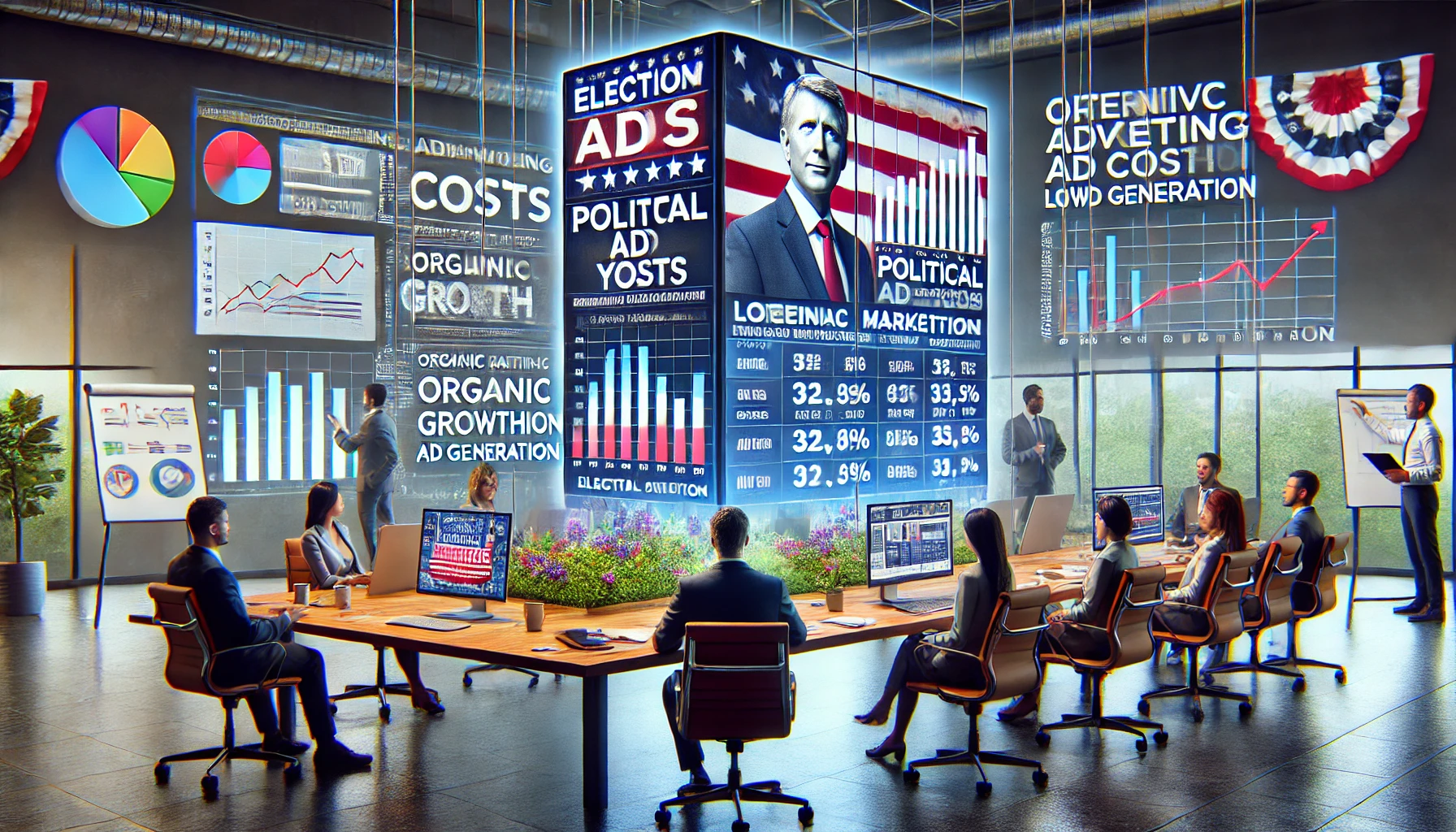September has historically been a challenging month for businesses when it comes to marketing and sales. With summer vacations wrapping up, back-to-school activities in full swing, and a shift in consumer behavior toward saving for the holidays, this month often sees a lull in spending and engagement. But when you add an election year into the mix, the situation can become even more complicated, particularly in the advertising space. During an election year, political campaigns dominate the media landscape, saturating ad platforms and driving up the cost of advertising. As a result, businesses often find that their advertising efforts become more expensive and less effective.
Why Is September a Tough Month?
Several factors make September particularly challenging for marketing and sales teams:
- Post-Summer Slump: After the busy summer months, consumers often pull back on spending in September. Families are adjusting to the new school year, while businesses are preparing for the final quarter of the year. This period is often marked by budget realignments, which can lead to slower sales.
- Holiday Preparation: Consumers and businesses alike begin to shift their focus toward the upcoming holiday season. Rather than making significant purchases in September, many consumers are saving for major holiday spending, causing a slowdown in sales.
- Budget Constraints: For many companies, September marks the end of the third quarter, which means budget reviews are taking place. Businesses often tighten their marketing and sales budgets during this period, awaiting the fourth quarter to ramp up for holiday sales.
The Impact of an Election Year on Advertising
In an election year, the challenges of September are amplified by the sheer volume of political advertising. Political campaigns flood media channels, especially in the weeks leading up to November elections, and September is often the height of this advertising push. This influx of political ads can dramatically impact the cost and availability of ad space for businesses.
1. Ad Space Saturation
Political campaigns typically have substantial budgets, allowing them to dominate key advertising platforms, including television, radio, and digital media. With so many political ads competing for attention, the availability of ad space shrinks, leaving businesses with fewer options. For smaller businesses, this limited ad space can make it challenging to maintain visibility during this period.
2. Increased Cost per Lead
As demand for ad space increases, so do the prices. During election years, businesses often see the cost per lead or cost per sale increase significantly in September. This is particularly true for digital platforms like Google Ads, Facebook, and Instagram, where auction-based ad pricing is influenced by competition. When political campaigns bid aggressively for ad placements, businesses must either increase their own bids or risk losing visibility.
Example: During the 2020 U.S. election, many businesses experienced a significant increase in the cost of Facebook ads in September and October. With political campaigns spending millions on digital platforms, the cost per click (CPC) and cost per thousand impressions (CPM) skyrocketed, making it more expensive for businesses to reach their target audiences.
3. Lower Ad Effectiveness
With the ad space saturated by political messaging, consumers often become fatigued and less responsive to advertising in general. This “ad fatigue” can make it difficult for businesses to break through the noise, even when they invest in premium ad placements. As a result, businesses may find that their ads generate fewer leads or conversions during election-heavy months, despite increased spending.
How Businesses Can Adapt
While September during an election year presents significant challenges, there are strategies that businesses can use to adapt and minimize the impact on their marketing and sales efforts.
1. Focus on Organic Growth
Rather than relying solely on paid advertising, businesses can focus on organic growth through content marketing, SEO, and social media engagement. By creating valuable, shareable content, companies can build relationships with their audiences without competing for ad space.
Example: A real estate agency might focus on publishing blog posts or YouTube videos about the housing market in September, helping potential buyers and sellers navigate the current environment. By investing in organic content, they can maintain visibility without overspending on paid ads.
2. Diversify Ad Channels
Businesses should consider diversifying their ad channels during election season. Instead of focusing solely on Facebook or Google Ads, companies might explore less competitive platforms such as LinkedIn, Pinterest, or niche industry sites. Additionally, exploring alternative ad formats like email marketing, influencer partnerships, or direct mail can help maintain visibility without directly competing with political ads.
3. Plan for Fourth Quarter Surge
Rather than increasing ad spend during September, businesses can allocate more resources to the fourth quarter, when political ads begin to taper off after Election Day. By strategically saving marketing budget for the holiday season, companies can capitalize on a more favorable advertising environment in October and November.
4. Leverage Retargeting
Retargeting can be a cost-effective way to stay in front of warm leads without constantly competing for new ad impressions. By focusing on retargeting individuals who have already engaged with their content or visited their website, businesses can optimize their ad spend and drive conversions even during high-competition periods like September.
Conclusion
September is already a challenging month for marketing and sales, but during an election year, the saturation of ad space and the increased costs of advertising can make it even more difficult for businesses to reach their target audiences. However, by focusing on organic growth, diversifying ad channels, and leveraging retargeting strategies, businesses can adapt to these challenges and continue to drive sales and conversions. Proper planning and strategic resource allocation will help businesses navigate the complexities of September, ensuring that they can stay competitive even during an election-heavy advertising landscape.
